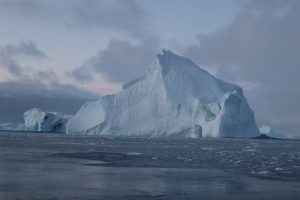If you can’t sew
“If you can’t sew, you aren’t a sailor” (and other things that seem unrelated to working at sea)
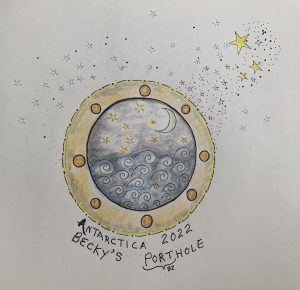
Artwork by Beth Tarrant as part of the blog fun!
I heard this quote in the film “Sea Gypsies” featuring a group of mariners who took their sailboat to Antarctica. There are several amusing quotes in the movie, and I liked this one because it expressed that there are seemingly unrelated skills useful (or even essential) to going to sea. My husband has said, of his time on tugboats, that a mediocre deckhand who could cook was more likely to get a job than a good deckhand who was a bad cook. (This was when cooking duties were shared by members of the crew.) This is not to say that a person shouldn’t train/learn specific skills associated with a job/career, but that they should recognize there are multiple paths to those goals.
The people on this cruise represent an incredibly diverse collection of knowledge and expertise – and I’m not just talking about the scientists. There is the Antarctic Support group which is composed of people who work on deck with the instruments/equipment that is deployed over the side of the ship (Marine Technicians), who work with the electronics (e.g. CTD, multibeam, echo sounder; the ETs and ITs), who oversee the laboratory (Marine Laboratory Technician) and who oversee/coordinate the cruise operations (Marine Project Coordinator). The skills involved include understanding how to handle and deploy large pieces of equipment, computer and electronic programming along with hands-on equipment repair, diverse science research needs and chemical hazards, and organizing, liaising and problem solving with multiple groups of people.
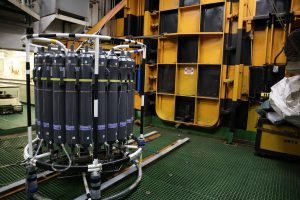
CTD in the Baltic room on the NBP.
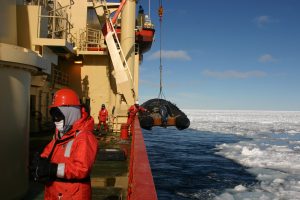
Deploying zodiac. (prior cruise)
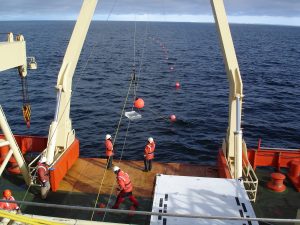
Deploying instruments using the aft A-frame. (prior cruise)
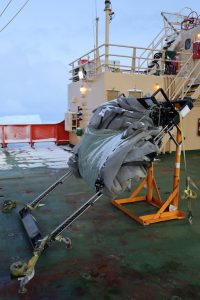
Mocness for sampling plankton at different depths.
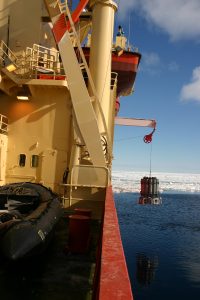
CTD being deployed (from a prior cruise).
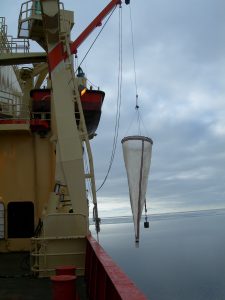
Deploying a large plankton net. (prior cruise)
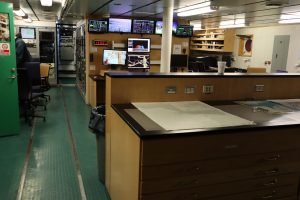
The Dry Lab on the NBP from where the ETs and ITs run the multibeam, sonar and CTD. We also have our personal computers set up in here.
The ship’s crew are an essential component, and without them we simply couldn’t be here. The captain and the mates are not only trained to run the ship, but they are experienced in working in the Antarctic environment. They know how to deal with ice for us to safely deploy and recover instruments, and what to expect regarding the weather and the ocean itself. The engineers not only make sure the engines work but oversee all the other systems that we need onboard (electricity, water, sewage, air handling). The deckhands (ABs) maintain the ship, handle lines and participate in other outside deck activities, and several are licensed to run the different cranes and winches on the ship. The cooks make sure that we are fed tasty and healthy food three (or even four) times a day despite the weather conditions. This is difficult enough on shore with ready access to supplies, here they need to buy enough food for our 6 (or more) week journey before we leave port. They need to keep the fresh fruit and vegetables in good shape for as long as possible (I’m stunned that we still have lettuce for salad 3 weeks into this trip) and provide a diverse set of meals to not only keep us fed, but to keep us in good spirits. We look forward to meals as a time for a break from work and a chance to socialize.
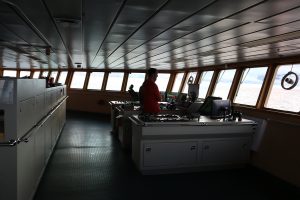
NBP bridge
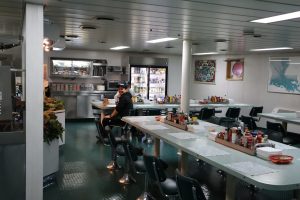
Our galley and two of the cooks.
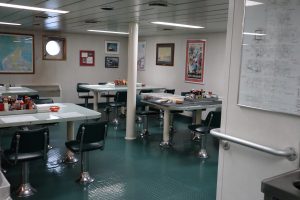
Another galley view.
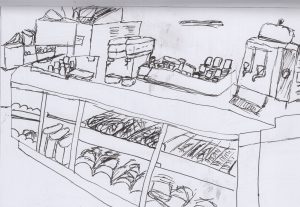
By SRS
Where we get our coffee, and other beverages, but mainly coffee.
So how did I get here? I already mentioned the LExEn grant that brought me to Antarctica in the first place, but what was my path to marine microbial ecology? I did not pursue any aspect of marine science in my college studies at Ohio State (I attended before they added “The” to the name). My degrees are in Microbiology (with Parasitology as my interest – talk about scary monsters, parasites win) and Molecular Genetics (in the days before PCR – for those of you unfamiliar with this method, it was in the time before cell phones). I was heading towards a medically related research career when I decided to accept a postdoctoral position at Woods Hole Oceanographic Institution. The Biology department was interested in bringing nucleic acid based methods into use for the study of marine organisms, and was recruiting postdoctoral researchers to do that. My first project was identifying the symbionts of planktonic foraminifera and radiolaria based upon their ribosomal gene sequences, and I then moved on to studying the diversity of eukaryotic microbes (yes, including parasites) in marine environments. I was introduced to mixotrophy by my collaborator on this project (Bob Sanders) in the early 2000’s, but it took us about 10 years before we actually started writing proposals together to pursue this work in Antarctica.
Before I show you more pictures of ice and icebergs, I’ll give you a quick tour of our working spaces on the NBP.
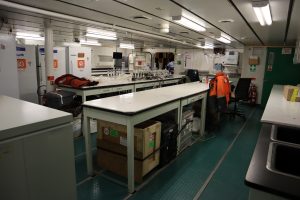
The main lab space where we are working. Note the rows of filtering rigs. We filter a lot of water.
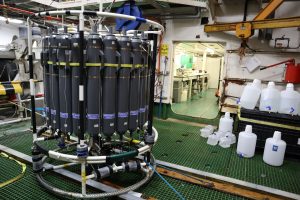
This is the CTD rosette with niskin bottles. We use it to collect our water. The actual CTD equipment is underneath all of the bottles.
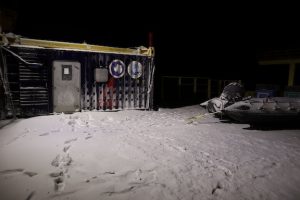
Some of our work requires the use of radioisotopes (H3 and C14), so it is conducted in a separate space – the Rad Van, also located on the helicopter deck.
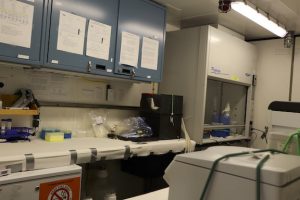
Inside the Rad Van.
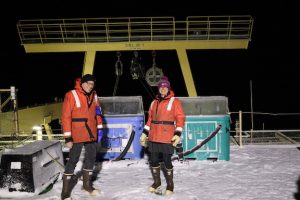
Some of what we do requires incubation at ambient temperatures, so our samples are put into incubators with running seawater outside on the helicopter deck of the ship. And no, there is not a helicopter onboard.
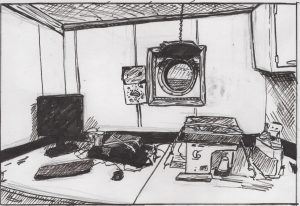
By D Mahoney
The corner space where I work at the flow cytometer. I chose it because I can look out the porthole.
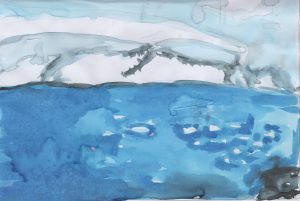
By C Champani
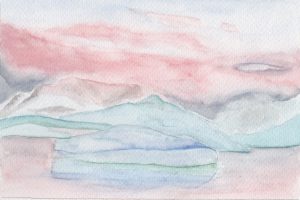
By M Cusolito
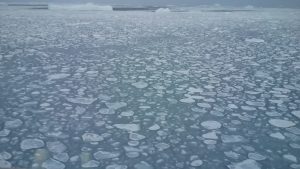
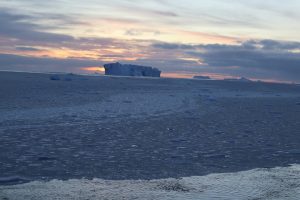
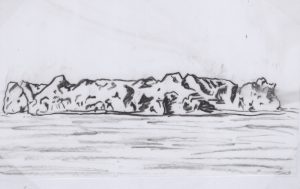
By I Correia
